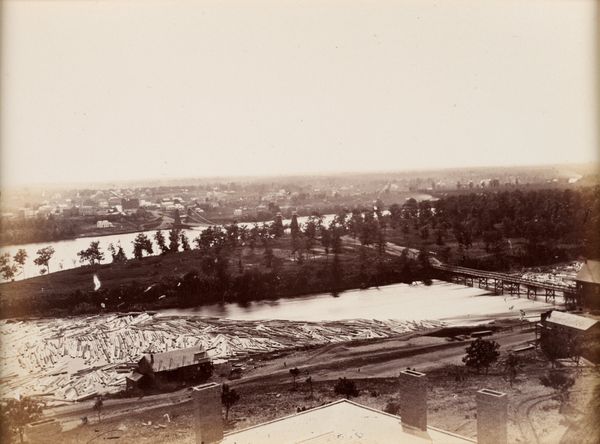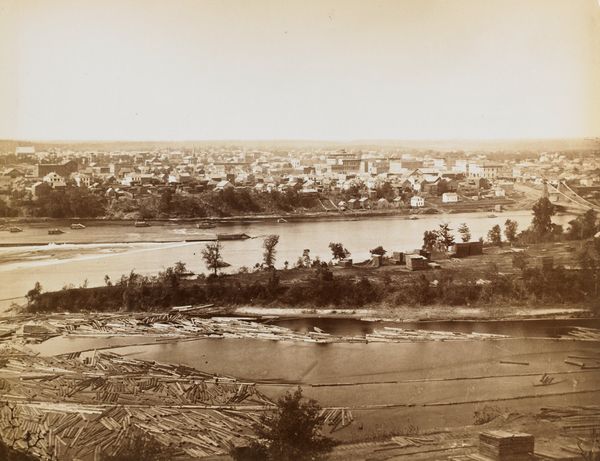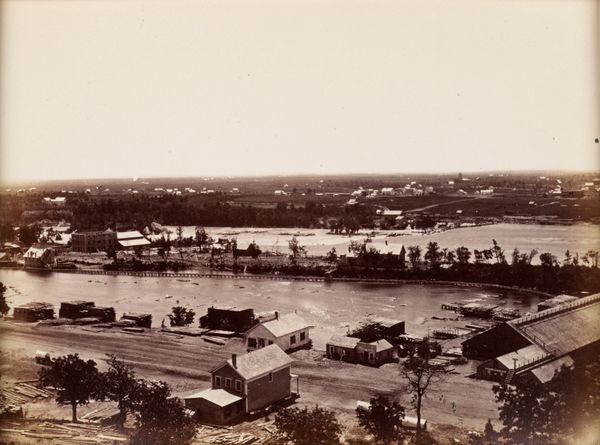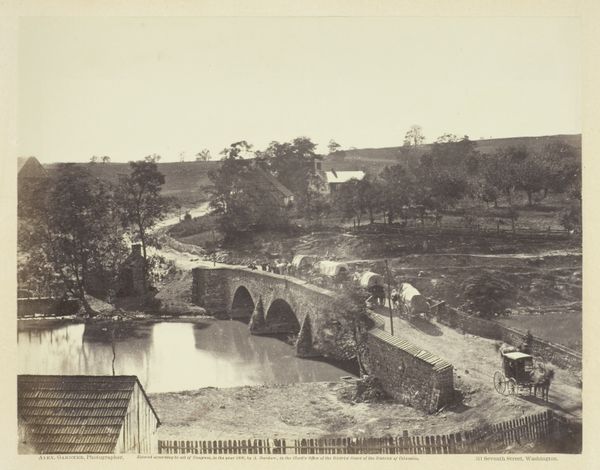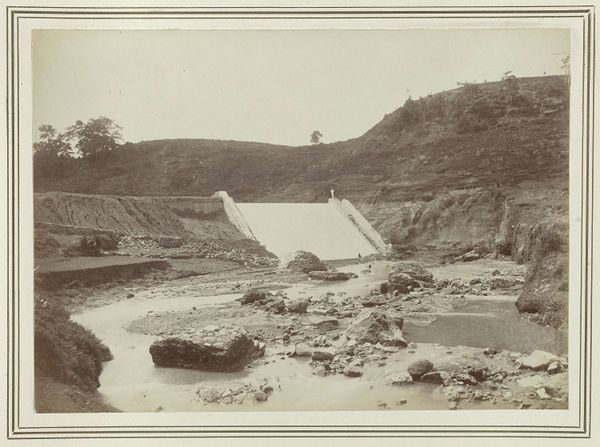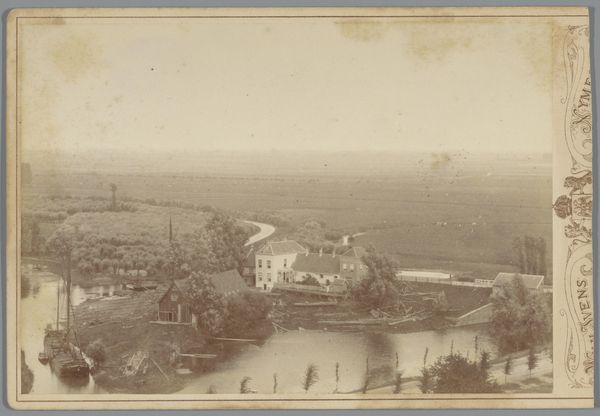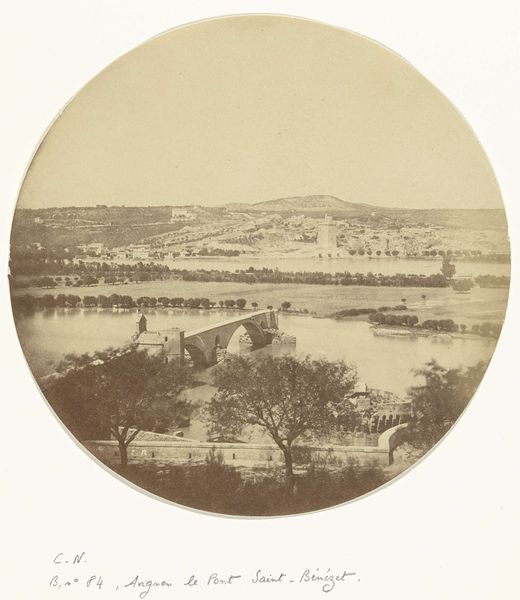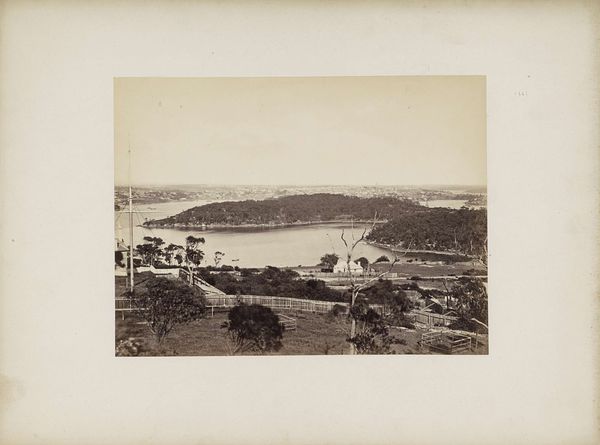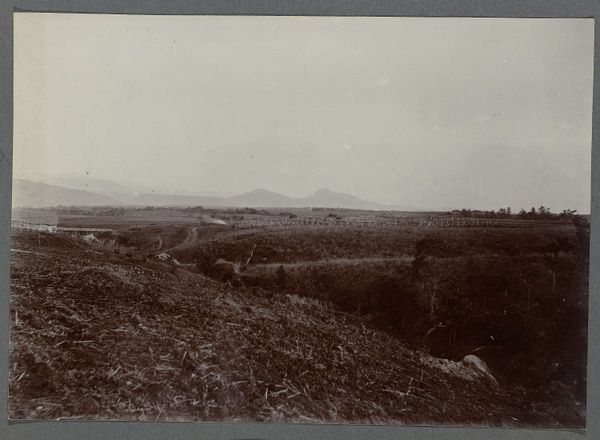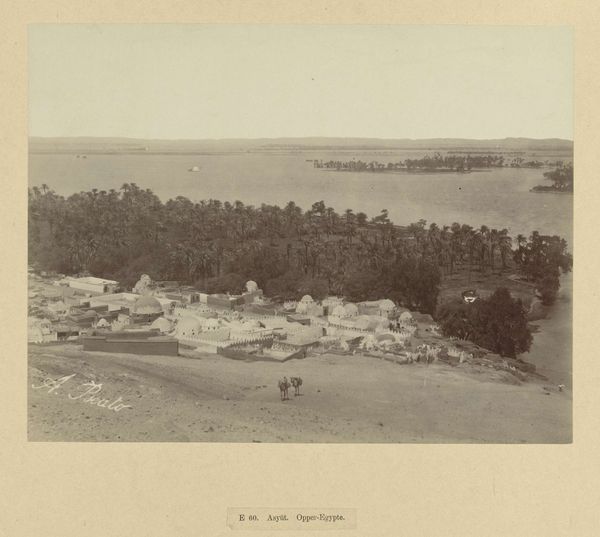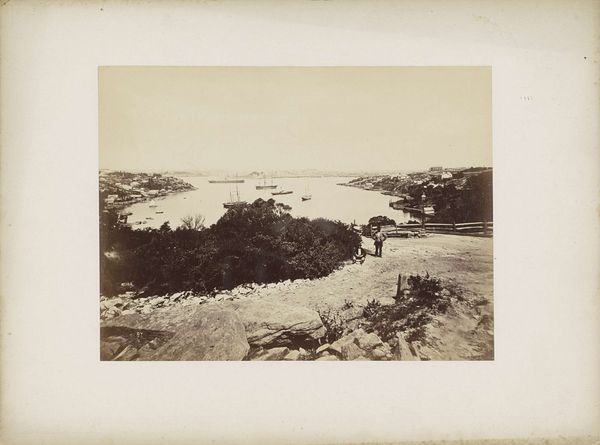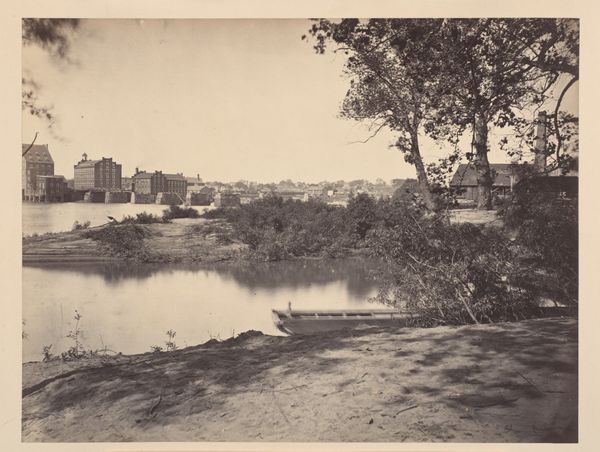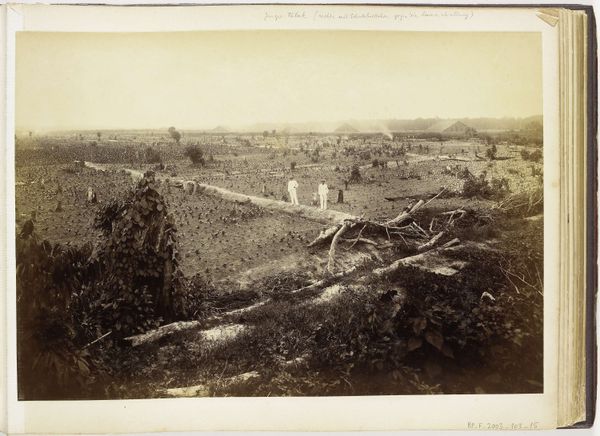
photography, gelatin-silver-print
#
landscape
#
photography
#
gelatin-silver-print
#
monochrome photography
#
hudson-river-school
#
united-states
#
cityscape
#
realism
#
monochrome
Dimensions: 6 1/8 x 8 1/4 in. (15.56 x 20.96 cm) (image)10 x 11 13/16 in. (25.4 x 30 cm) (mount)
Copyright: Public Domain
Editor: This gelatin-silver print from 1857, "St. Anthony and Minneapolis" by Benjamin Franklin Upton, offers a compelling view of a bustling cityscape intertwined with its surrounding natural environment. I’m struck by the sheer quantity of timber floating in the river. What can you tell me about it? Curator: Well, the image vividly presents the intense industrial activity and its direct impact on the environment. The vast logs jamming the river testify to the prominence of the lumber industry in shaping the city. Notice how the cityscape almost fades into the background, dominated by the chaotic yet ordered stacks of wood. Editor: It's interesting how you point out that order amidst the chaos, since I immediately read this photograph as being almost about industry trampling nature. Curator: The tension is palpable, isn't it? Consider the labor involved in harvesting, transporting, and processing that lumber. The photograph, in essence, is capturing a moment of immense social and economic transformation driven by material extraction. Where did the raw materials for such industry originate, and at what costs to indigenous populations? The question is where did it all go after being processed. Editor: So, the photograph becomes more than just a pretty landscape; it’s also a documentation of a specific economic activity. I guess you’re inviting me to think about photography not just as art, but as a commodity, and its relationship to labor? Curator: Precisely. This image acts as evidence of resource exploitation, commodification of nature, and the making of the modern city. What do you make of the photographic process in translating that information? Editor: That is so different from how I would have initially seen this! Now I'm thinking about how the act of capturing this image with a camera contributed to the documentation and, maybe, even the legitimization of that specific form of resource use. Curator: Absolutely, a new lens through which we understand this photograph and, perhaps, landscape photography as a whole.
Comments
No comments
Be the first to comment and join the conversation on the ultimate creative platform.
